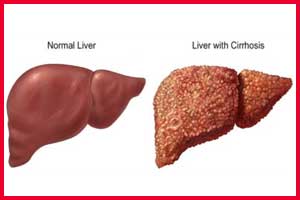- Home
- Editorial
- News
- Practice Guidelines
- Anesthesiology Guidelines
- Cancer Guidelines
- Cardiac Sciences Guidelines
- Critical Care Guidelines
- Dentistry Guidelines
- Dermatology Guidelines
- Diabetes and Endo Guidelines
- Diagnostics Guidelines
- ENT Guidelines
- Featured Practice Guidelines
- Gastroenterology Guidelines
- Geriatrics Guidelines
- Medicine Guidelines
- Nephrology Guidelines
- Neurosciences Guidelines
- Obs and Gynae Guidelines
- Ophthalmology Guidelines
- Orthopaedics Guidelines
- Paediatrics Guidelines
- Psychiatry Guidelines
- Pulmonology Guidelines
- Radiology Guidelines
- Surgery Guidelines
- Urology Guidelines
Guideline on use of anticoagulation and pro-coagulants in cirrhosis patients

The American Gastroenterological Association (AGA) has released guidance on the use of currently available testing of the coagulation cascade, and help practitioners appropriately use anticoagulation and pro-coagulants in patients with cirrhosis.The guideline is published in the AGA journal Gastroenterology.
Complications from both pro- and antithrombotic states are seen in patients with cirrhosis. Therefore, a common scenario for the clinician is considering anticoagulation in a patient while worrying about bleeding risk.
Four experts reviewed the current and evolving data on coagulation in this population and provided clinical practice advice, including the following:
- Global tests of clot formation such as rotational thromboelastometry (ROTEM), thromboelastography (TEG), Sonorheometry and Thrombin generation may eventually have a role in the evaluation of clotting in patients with cirrhosis but currently, lack validated target levels.
- In general, clinicians should not routinely correct thrombocytopenia and coagulopathy before low-risk therapeutic paracentesis, thoracentesis, and routine upper endoscopy for variceal ligation in patients with hepatic synthetic dysfunction induced coagulation abnormalities.
- Blood products should be used sparingly because they increase portal pressure and carry a risk of Transfusion Associated Circulatory Overload (TACO), Transfusion Related Acute Lung Injury (TRALI), infection transmission, alloimmunization and/or transfusion reactions.
- The following transfusion thresholds for management of active bleeding or high-risk procedures may optimize clot formation in advanced liver disease: hematocrit ≥25, platelet count >50,000, and Fibrinogen >120. Commonly utilized thresholds for INR correction are not supported by evidence.
- Thrombopoietin (TPO) agonists are a good alternative to platelet transfusion but require time (about 10 days) to elevate platelet levels.
- The large volume of fresh frozen plasma (FFP) required to reach an arbitrary INR target, limitations of the usual target, minimal effect on thrombin generation and adverse effects on portal pressure significantly limit the utility of this agent.
- The 4-factor Prothrombin Complex Concentrate (PCC) contains both pro- and anticoagulant factors which offer an attractive low volume therapeutic to re-balance a disturbed hemostatic system. However, the dosage is, in part, based on INR which is problematic in cirrhosis and published experience in liver disease is limited.
- Anti-fibrinolytic therapy may be considered in patients with persistent bleeding from mucosal oozing or puncture wound bleeding consistent with impaired clot integrity. Both epsilon-aminocaproic acid and tranexamic acid inhibit clot dissolution. Neither is felt to generate a hypercoagulable state although both may exacerbate pre-existing thrombi.
- Desmopressin (DDAVP) releases the von Willebrand Factor (vWF) as its primary hemostatic mechanism. As this factor is usually elevated in cirrhosis, the agent lacks a sound evidence-based foundation but may be useful in patients with concomitant renal failure.
- Systemic heparin infusion is recommended for symptomatic DVT and PVT but there are unresolved issues regarding monitoring with both the anti-Xa assay and the partial thromboplastin time due to cirrhosis-related antithrombin deficiency (heparin cofactor).
- Treatment of incidental PVT depends upon an estimated impact on transplant surgical complexity versus risks of bleeding and falls. Therapy with LMWH, vitamin K antagonists, and direct-acting anticoagulants (DOACs) improve PV repermeation versus observation alone.
- DOACs such as the factor Xa and thrombin inhibitors are relatively safe and effective in stable cirrhotic patients but are in need of further study in patients with more advanced liver disease.
This review is framed around the best practice points, which were derived from the most impactful publications in the area of coagulation in cirrhosis and agreed to by all authors.
For further reference log on to https://doi.org/10.1053/j.gastro.2019.03.070

Disclaimer: This site is primarily intended for healthcare professionals. Any content/information on this website does not replace the advice of medical and/or health professionals and should not be construed as medical/diagnostic advice/endorsement or prescription. Use of this site is subject to our terms of use, privacy policy, advertisement policy. © 2020 Minerva Medical Treatment Pvt Ltd